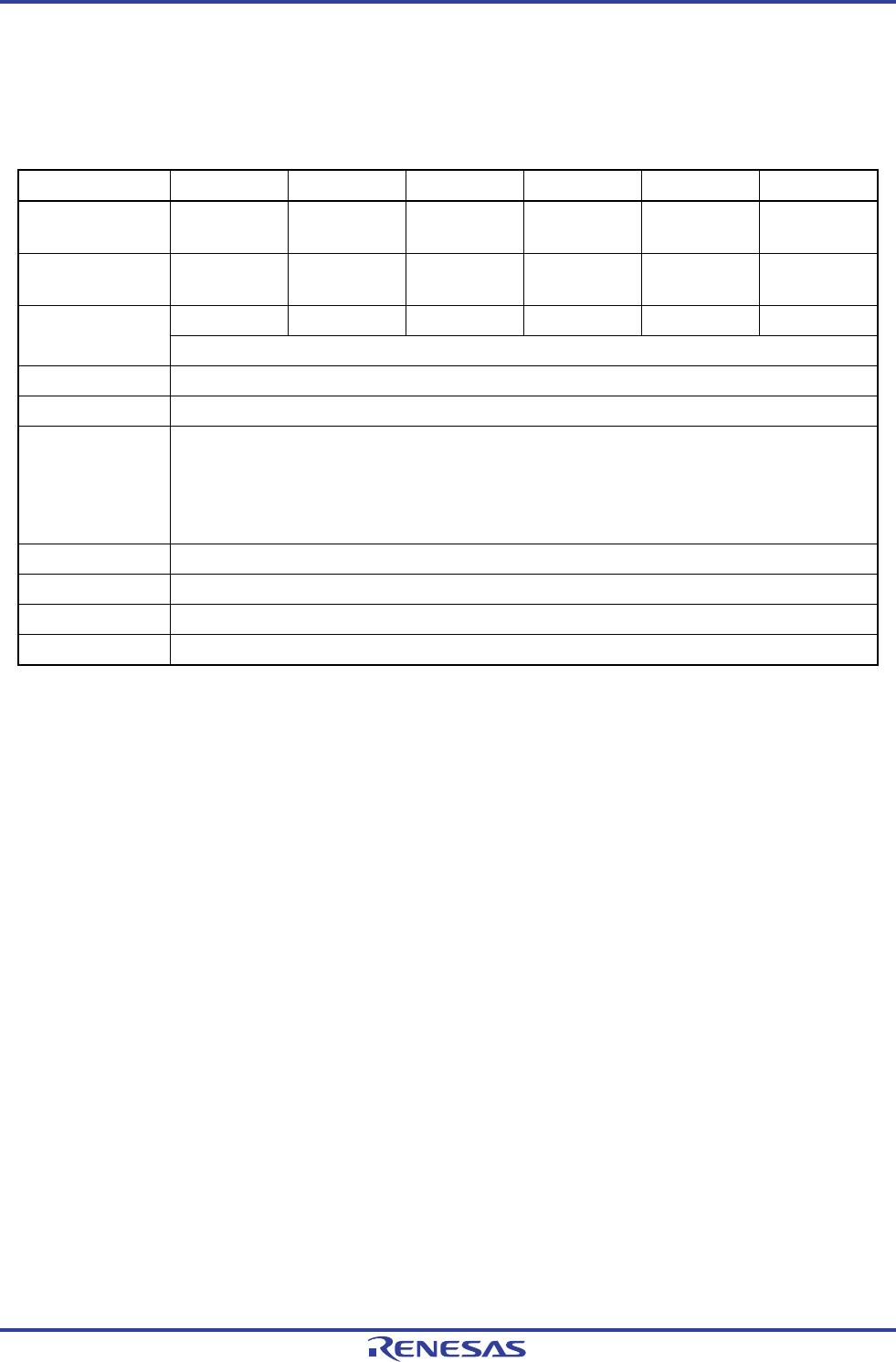
RL78/G1A CHAPTER 12 SERIAL ARRAY UNIT
R01UH0305EJ0200 Rev.2.00 547
Jul 04, 2013
12.8.1 Address field transmission
Address field transmission is a transmission operation that first executes in I
2
C communication to identify the target for
transfer (slave). After a start condition is generated, an address (7 bits) and a transfer direction (1 bit) are transmitted in
one frame.
Simplified I
2
C
IIC00 IIC01 IIC10 IIC11 IIC20 IIC21
Target channel Channel 0 of
SAU0
Channel 1 of
SAU0
Channel 2 of
SAU0
Channel 3 of
SAU0
Channel 0 of
SAU1
Channel 1 of
SAU1
Pins used SCL00,
SDA00
Note 1
SCL01,
SDA01
Note 1
SCL10,
SDA10
Note 1
SCL11,
SDA11
Note 1
SCL20,
SDA20
Note 1
SCL21,
SDA21
Note 1
INTIIC00 INTIIC01 INTIIC10 INTIIC11 INTIIC20 INTIIC21 Interrupt
Transfer end interrupt only (Setting the buffer empty interrupt is prohibited.)
Error detection flag ACK error detection flag (PEFmn)
Transfer data length 8 bits (transmitted with specifying the higher 7 bits as address and the least significant bit as R/W control)
Transfer rate
Note 2
Max. fMCK/4 [MHz] (SDRmn[15:9] = 1 or more) fMCK: operation clock frequency of target channel
However, the following condition must be satisfied in each mode of I
2
C.
• Max. 1 MHz (first mode plus)
• Max. 400 kHz (first mode)
• Max. 100 kHz (standard mode)
Data level Non-reversed output (default: high level)
Parity bit No parity bit
Stop bit Appending 1 bit (or ACK reception timing)
Data direction MSB first
Notes 1. To perform communication via simplified I
2
C, set the N-ch open-drain output (VDD tolerance (25- to 48-pin
products/EV
DD tolerance (64-pin products)) mode (POMxx = 1) for the port output mode registers (POMxx).
See 4.3 Registers Controlling Port Function and 4.5 Register Settings When Using Alternate Function
for details.
When IIC00, IIC10, IIC20 communicating with an external device with a different potential, set the N-ch open-
drain output (V
DD tolerance (25 to 48-pin products/EVDD tolerance (64-pin products)) mode (POMxx = 1) also for
the clock input/output pins (SCL00, SCL10, SCL20). See 4.4.5 Handling different potential (1.8 V, 2.5 V) by
using I/O buffers for details.
2. Use this operation within a range that satisfies the conditions above and the peripheral functions characteristics
in the electrical specifications (see CHAPTER 29 ELECTRICAL SPECIFICATIONS (T
A = −40 to +85°C) and
CHAPTER 30 ELECTRICAL SPECIFICATIONS (G: INDUSTRIAL APPLICATIONS T
A = −40 to +105°C)).
Remark m: Unit number (m = 0, 1), n: Channel number (n = 0 to 3), mn = 00 to 03, 10, 11
<R>
<R>


















